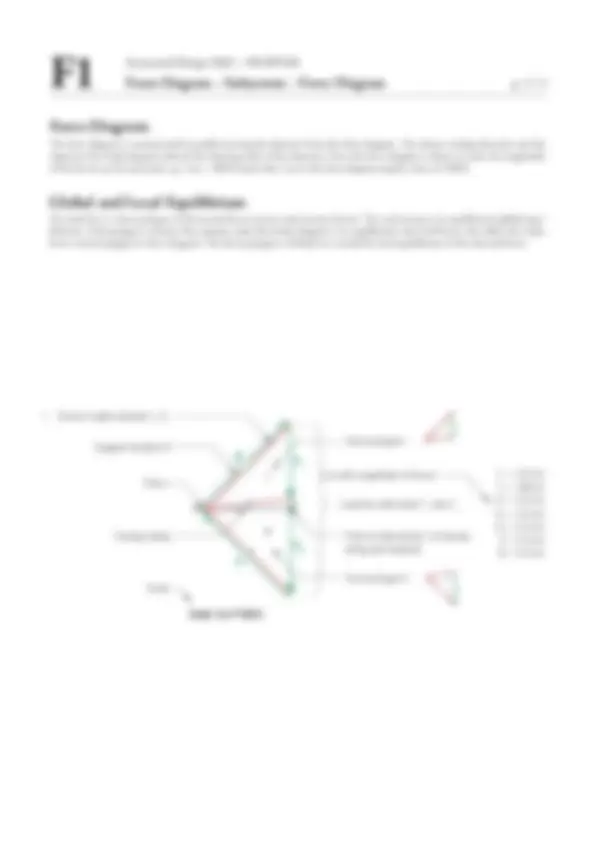



Study with the several resources on Docsity

Earn points by helping other students or get them with a premium plan


Prepare for your exams
Study with the several resources on Docsity

Earn points to download
Earn points by helping other students or get them with a premium plan
Community
Ask the community for help and clear up your study doubts
Discover the best universities in your country according to Docsity users
Free resources
Download our free guides on studying techniques, anxiety management strategies, and thesis advice from Docsity tutors
In graphic statics, forces of a structure are shown as vectors, and therefore two plans (form and force diagram) are being used.
Typology: Exercises
1 / 3

This page cannot be seen from the preview
Don't miss anything!


2
I
II
I o II
1
1
3
1
2
3
2
3
2
2
i
In graphic statics, forces of a structure are shown as vectors, and therefore two plans (form and force diagram) are being used. The form diagram shows the geometry of the structure to scale with all bearing elements and the location of the loads. The force diagram shows the external and internal forces to scale. Every line in force diagram corresponds to the parallel line in form diagram. The subsystems are sketches not to scale and show information about single nodes.
Form Diagram scale 1:
Subsystem no scale
Node II
Node I
Force Diagram scale 1cmɋ50kN
Massstab
Auflagerreaktion B Auflager B
Auflagerreaktion A
Schlusslinie
Auflager A
Hilfslinien
Knoten I
Seilsegment 1
Resultierende R
Belastung F
Wirkungslinie F 1
1
2
II
I
3 1 2
Angabe der Ableserichtung hier im Uhrzeigersinn
Angabe der Ableserichtung hier im Uhrzeigersinn
Knoten, der betrachtet wird
Beschriftung gemäss Nummerierung im Lageplan
gesuchtes Element (Richtung & Grösse)
gesuchtes Element (Richtung & Grösse)
angreifende, gegebene Belastung
Knoten I
1
2
The form diagram shows the geometry of the structure with all bearing elements and the location of loads. Loads (F 1 and F 2 ) and support reactions (A and B) are so called “external forces”and are shown with their direction (as an arrowhead). They are drawn in green colour. Forces within the structural elements (cable elements 1-3) are called „internal forces“ and have no distinct direction. Depending on the kind of load they are shown in red colour for tension or blue for compression. The form diagram has to be drawn to scale, e.g. 1:200 means that 1cm in plan equals 200cm in reality.
Form Diagram
Resultant R
Line of action F 1
Load F 1
Node I
Cable segment 1
Support B
Support reaction B
Support reaction A Support A Closing string
Construction line
Scale
Scale 1:
indication of reading direction (here clockwise)
indication of reading direction (here clockwise)
searched element (direction and stress)
searched element (direction and stress)
labeling according to numeration in form diagram
considered node
Node I applied, given load
The subsystem (also free body diagram – FBD) and the indicated reading direction declare the order of the elements that are to be drawn in the force diagram. The subsystem is a sketch and thereby it is not to scale. It shows all forces and elements applied on the respective node and differentiates between given and searched elements. By transferring the direction of a force from force diagram to a subsystem, one can indicate tension (direction away from the node, usually colored red) and compression (direction towards the node, usually colored blue) elements.
Subsystem